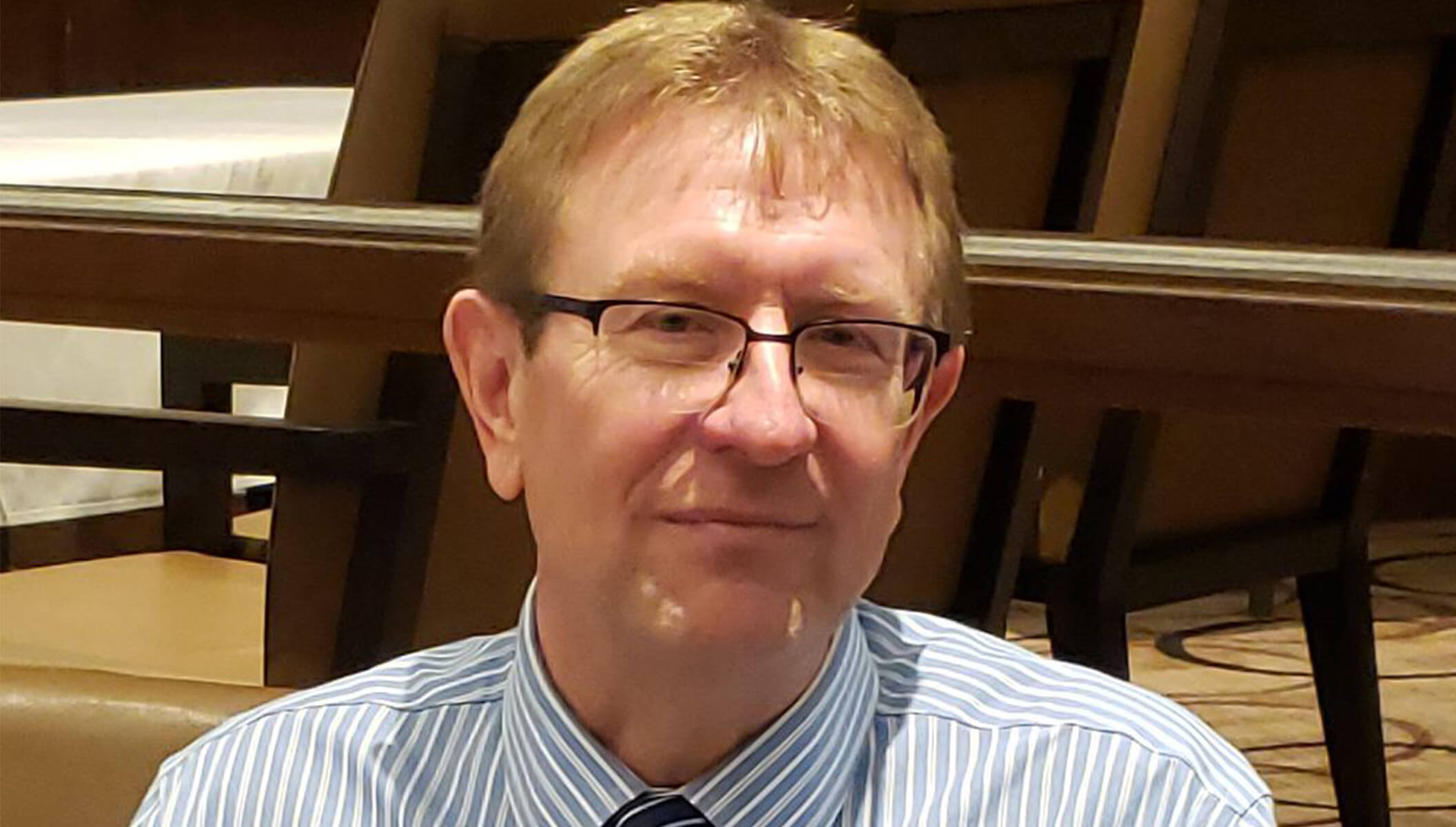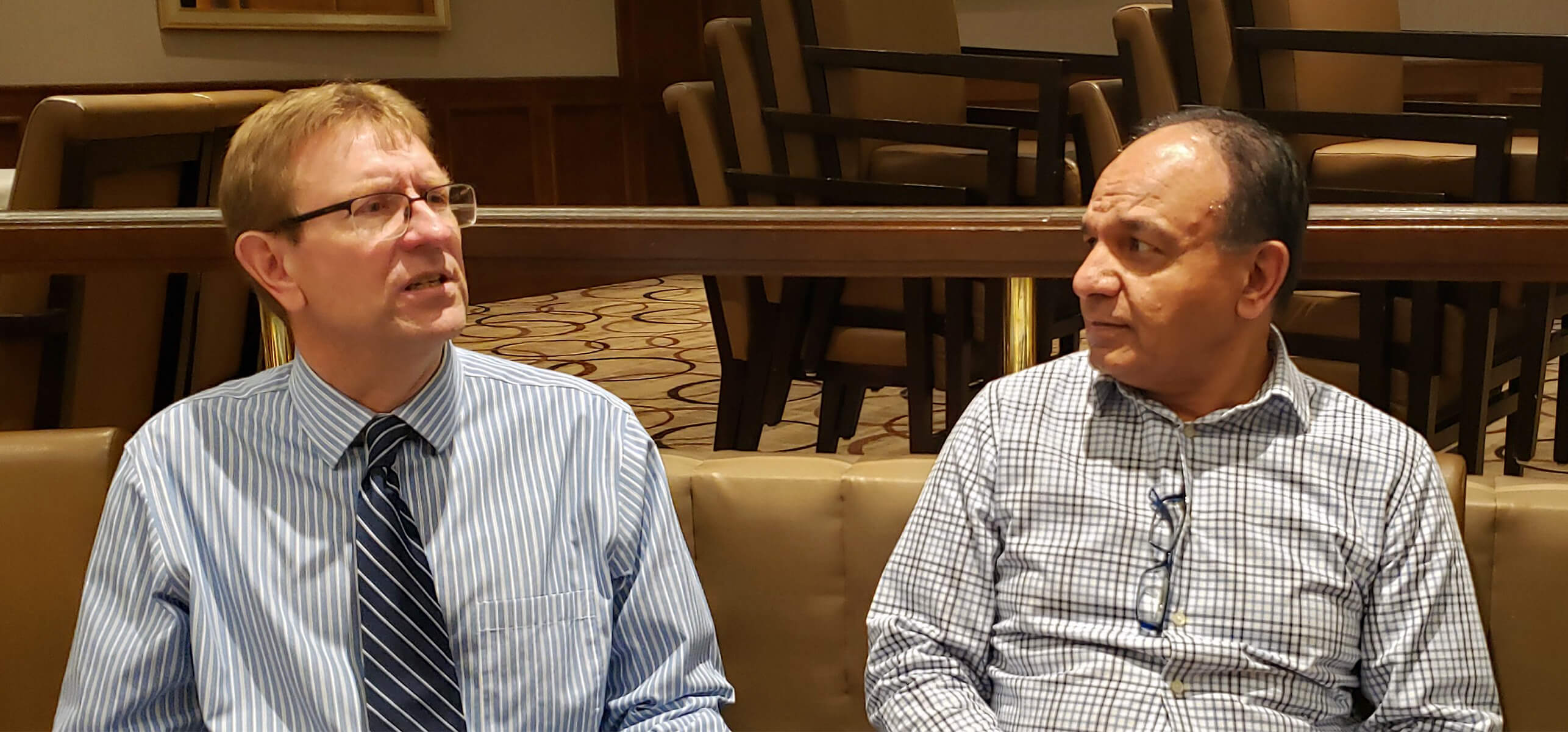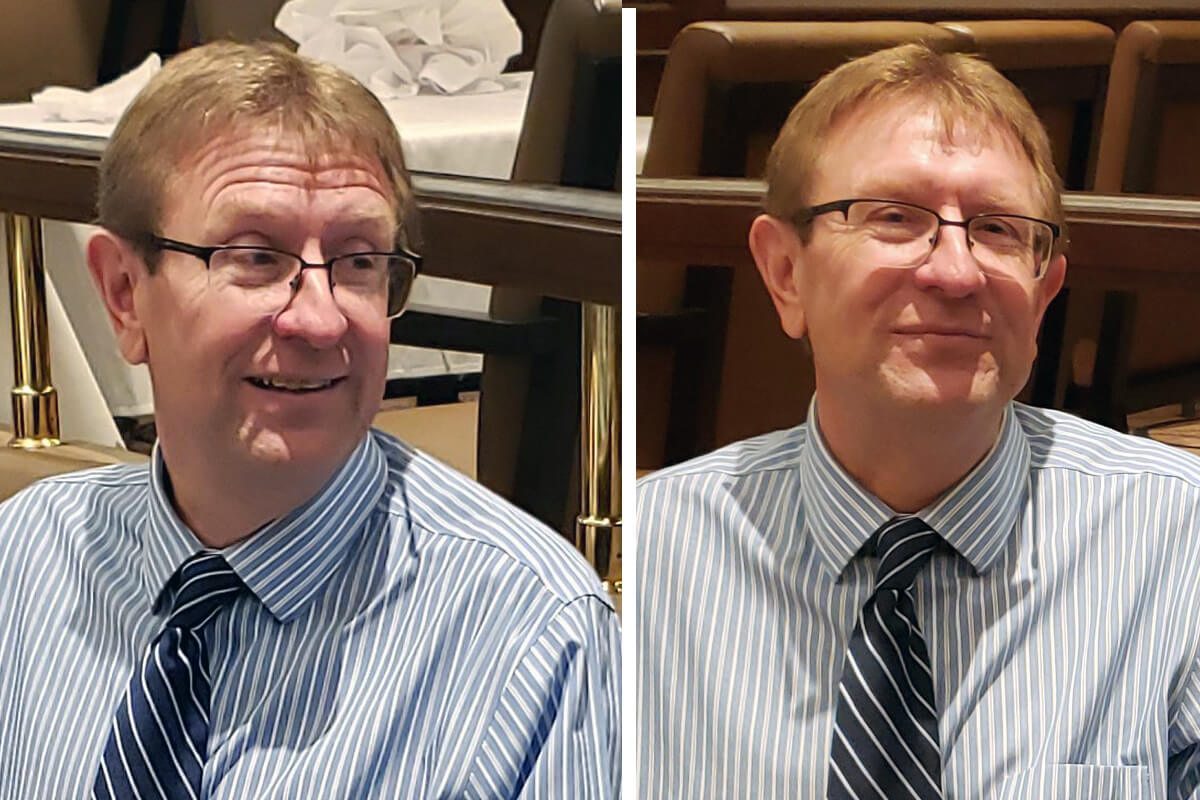
John, let us begin by asking you about your early years growing up, what drew you to geophysics, how you decided to get to Stanford, and then carry out the research in seismic imaging that fetched you a doctorate.
I had an early interest in minerals and rock collecting that probably went back to second or third grade. I have never lost that interest and I’m sure my daughters have fond memories of all the vacations we took to classic mineral collecting locations around the US. In high school I liked physics and math and found the humanities way to “soft” for my tastes, so I knew I wanted to go to a college that was hard-core science and engineering. Of course, the best of those for undergraduate is Colorado School of Mines, so I was determined to go there, and did. When it came time to decide between starting to earn a living, or going to grad school, and then which grad school if any, I was torn. I already had a good job offer from Amoco in Denver, I had also been taking grad school courses in reservoir simulation (believe it or not, it was the best class to learn high-end computing and numerical analysis) and of course taking classes from Norm Bleistein at CSM. Stanford however had this incredible reputation. Jon Claerbout and his students were making breakthroughs in just about every possible aspect of seismic data processing and imaging. After applying to Stanford and CSM and being accepted to both, I had to make a decision. I visited Stanford on April 1, 1985. Jon of course is a unique and impressive man, but in addition to that, the students were just amazing, totally intimidating too. It was going to be a tough decision. I had a phone call with my father where I told him all the plusses and minuses of the options. It would have been easy to stay at CSM and work with Norm. When I just couldn’t make up my mind, my father finally said, “are you going to go to Stanford, or are you going to ruin your life.” Decision made.
What was it like working with stalwarts like Jon Claerbout and Norm Bleistein?
I’ll start with Norm. He was a machine. He had this incredible ability to tear apart a physics problem and make a math problem out of it. Then, of course as the total genius that he was, he had this huge mathematical “toolkit” in his head that allowed him to “guess the solution, and then prove it was correct”. My hand was always sore from taking notes at blistering speed during his lectures. I still remember some of what he taught me back then, 35 years ago. I can still impress people by solving problems semi-analytically they think will require a heavy-duty numerical computation.
Jon was a very different kind of genius. His lectures usually started out with something that seemed trivial and you were cruising along, hardly even needing to take notes, and then he would make some change of variables, or some approximation or observation, and then totally blow you away. At first you wouldn’t even believe it was legitimate. It was like alien technology from the future. You didn’t understand it, or how the heck he came up with it, and you didn’t believe it would actually work. But then it did. And he would pull that over and over and over. He still does to this day. We SEP students learned to just write his ideas down or mentally file them and come back to them five or ten years later, because he was always ahead of his time and you just would not be able to make sense of his idea until you let it soak for some years. But, many cool things that I later “invented” were just ideas from Jon that everyone couldn’t make sense of when he first said them.
Every individual I have come across, who has worked at Amoco, cannot forget the excellent time he/she had learning and enjoying geoscience applications. Tell us about your experiences there, and more so some stories that have not been told before.
The Tulsa Research Center was the most awesome place to do Geophysics and get paid at the same time. Everyone there was a mad scientist of some sort. We egged each other on in so many ways. It was due to both the force of personality as well as incredibly valuable contributions made by Sven Treitel that we had the license to have such an environment. To do this question justice I would have to write a whole book.
One small anecdote I will share. I will not name names, but one of my friends there was a master thief in reverse. We had a game. He would break into my office and leave something, some small token, and then see how long it would take me to find it. I would eventually and then I would return it to him. Then, the game would start over and he would break into the research center and my office and hide something else. He was not allowed to place the object during business hours, and he was not allowed to use his card key to get access to the building. He actually had to break in, and then also break into my locked office. Once I found it, he would describe the methods he used. His techniques were part Laurel and Hardy and part James Bond. We would all be rolling on the floor when he would describe the adventure. I don’t know how he didn’t get caught by security, but he never did.
When Amoco merged with BP, some stalwarts decided to part ways, but you kept going. What were your reasons to stay put?
The reasons were actually fairly mundane. I needed a job, BP Amoco now had one of the biggest and most complex portfolios of oil and gas fields with interesting imaging challenges, and had some of the most interesting and powerful computers in the business. They owned my code. I didn’t want to lose all that. While it was very sad to break up the fantastic group in Tulsa; in some ways, the departures of Dan Whitmore, Sam Gray, Rusty Alford, Chester Jacewitz, Kurt Marfurt and all my other fellow mad scientists gave me a very prominent role in the new company. So I took it. There’s an old saying “never turn down a combat assignment”.
You are now the distinguished advisor for seismic imaging at BP. What all do your responsibilities entail?
I won’t give you my internal job description, as it would also seem a bit mundane. But I see my job through three lenses. First, I have to keep the very talented young group of scientists that I work with focused on the right challenges, entertained with all the things that I call “wisdom of the ancients” (like Jon, Norm, Sam, Dan, etc.), and as happy as I can convince them to be in challenging times. Second, I have to advise their bosses on the right way to run a technology group. Third, I have the wonderful privilege of having access to the senior-most managers in our company and I get to help them make some very big decisions. I have to earn their trust by being right a lot more than I am wrong. So far, I think I have been pretty lucky to have some cool things work out in that department.

Seismic velocity estimation is challenging in many ways, which in turn can present difficulties in migrating seismic data. Could you elaborate some of the key challenges and how they can be overcome?
Well, some of that is covered in the lecture. I think the fundamental aspect is that there are some things about the way seismic reflection data “works” that are a little counter-intuitive. But, once I teach you what those things are, in any place where the earth is cooperative, we can now make pretty good images because we can figure out a decent imaging velocity model directly from the data.
In your talk abstract you mention that ‘lateral resolution of velocity anomalies can often be higher than vertical resolution’. This comes across as a difficult statement to believe. Could you provide some justification for this?
It’s in the geometry of our experiment. Basically we have plenty of waves that travel within a small angle of vertical (say less than 45 degrees). Thus, we can detect edges of geological features (which are often the causes of velocity anomalies) pretty easily. We don’t do a good job processing waves that have propagation paths that are largely horizontal. Sure the ones in the near surface we can and do use, but the ones that “dive” and turn deeper in the Earth are much more complex to analyze than reflections. Yes, FWI does use those waves, but they don’t admit simple geometrical optics intuition. So, since those paths are harder to deal with, it is harder to detect edges in the up-down direction compared to the side to side direction.
How much calibration of the seismic velocities with well-derived velocity models do you think is required, and how does it help?
I think this is one of those topics where coming to a holistic approach has been difficult. Sometimes the standard approaches work just fine. But other times we find well velocities will not flatten gathers very well at all. I think we don’t really understand anisotropy all that well. When it is complex, we have to resort to a lot of empirical fudge factors.
With the sub-salt plays being important in many areas around the world, accurate velocity model determination would be key in their seismic imaging. Your comments on where all this is going?
I can’t make up my mind. Six years ago, I was about to give up on FWI solving that problem. Then, BANG we had a VERY successful FWI run on a very complex salt model. It blew away 20 years of effort with interpretation and tomography. So, then I began to think, maybe FWI will actually just completely solve this problem and we don’t need to bother working on other approaches. But, six years on now, we are still struggling, and velocity model construction in the most difficult cases is still hard. I am a fan of direct approaches, so I like the fundamental approach of FWI. I like less approaches that have a lot of ingredients and “moving parts” that are hard to all get working together. But, we may be stuck with hybrid approaches for a while longer. I predict some smart young scientist will eventually knock this problem out. In the meantime, we have to just keep throwing everything at it.
With the machine learning applications gaining importance in the last five to six years, do you see any automated applications for generating accurate subsurface velocity models?
This is a tough one. My career was the age of computers getting fast enough to actually do the physics that have, truth be told, been known long before I started. I came at the right time to actually code that stuff up and apply it at scale on real problems that mattered to the oil and gas business. I don’t think the problem is purely a pattern matching problem that can be solved with approaches that are fundamentally pattern matching. Yes, I know I am selling some of the newest ML approaches short. Geology (and thus Geophysics) is not really a “bounded problem”. I don’t think I can ever build a complete catalog of everything you could possibly encounter in a seismic reflection dataset. Actual physical insight is useful and necessary. Now, that said, there are aspects of the problem that are pattern matching of a sort. So, perhaps we can speed up those parts of the calculations. But we have to watch out for the fact that we don’t always know what these methods are “keying” on, so I still think human judgement and intuition will be useful for as long as we are trying to solve the velocity model estimation problem.
Now, that said, some parts of what we do might be accelerated with pattern matching approaches, and those approaches might help us do the well-seismic tie problem.
Looking back at the advancements that have taken place in geophysics in the last four decades or so, some people would opine that there are long silent periods interspersed with great bursts of technology brilliance? Your comments?
Nah, we know the physics. Or, at worst, there are only a few frontiers left in the physics and we have known about those for those four decades. Mostly they deal with complex multiple scattering. The big advances came when we finally figured out how to acquire or how to afford to acquire the data we actually need to run the physics we already knew about. I oversimplify a bit, but not really that much. If you want to be famous, work on acquisition, at least some of the time. That’s what allows the big breakthroughs.

I am reminded of a quote that says, ‘It is strange that only extraordinary men make the discoveries, which later appear so easy and simple.’ Nevertheless, discoveries make our science evolve and benefit the work we carry out. Do you think there is need for more of such ‘extraordinary’ men?
That’s also a tricky question. I know some incredibly smart individuals that understand everything we are doing, even better than I do, but who never made a big discovery. I also know some much more “normal” individuals that had a knack for getting right to the heart of a complex problem and solving it. When you phrase the question as you do, of course the answer is “yes”. But, actually I think it’s entirely possible, or even likely, that advances will come from people who do not think of themselves as “extraordinary”.
You serve as an assistant editor for ‘Geophysics’, are the recipient of the SEG Virgil Kauffman medal, and now the SEG Distinguished Lecturer. Tell us how it feels being recognized and giving back to the community.
I think these things just creep up on you. No one I know started out thinking that they were going to pursue those things. You start by just giving back to our science in some small and concrete way, and you keep on doing it. Mainly you keep on doing it because you know it needs to get done and there doesn’t seem to be that many volunteers. Next thing you know, you have moved up in prominence in some way. Maybe that is becoming a committee chair, rather than just a member. Maybe that is becoming a frequent reviewer, rather than just a reader of a journal. Then, maybe an Associate Editor, rather than only a reviewer. Science, and thus a profession based on it, only thrives when people in it give back. My father would always say “there are sources and there are sinks”. Don’t just be a sink.
What are some other interests that you have?
Too many! I love the outdoors. So, I try to get out a lot. Mountain biking, hiking, snowshoeing, and yes, still mineral collecting. I also like to make things. I’ve built a lot of furniture. Believe it or not, I was at one point a Gemologist and made some money on the side faceting gems for custom jewelry. While my daughters were younger, my wife and I got into amateur sounding rockets in a pretty serious way. That was a great place to direct my “engineering” desires. The last few years I have been putting in some time in competitive target archery.
What would be your message for up and coming geophysicists?
Make sure you are in this field for the right reasons. When I joined, many joined hoping it was an easy way to make money. It may or may not be easy in the future to have a high-paying job in this field. Be in it because you are fundamentally fascinated with the science. Then you will be good at it, and then ultimately the financial stuff will probably come too.
Second, learn the “wisdom of the ancients”. Those famous names that you read about created some amazing scientific works. Go read them and understand them, not just the ones in your favorite topic. You are “there” when you are sure you could replicate their work. At that point, you are ready to start making your own discoveries.
Third, think about the fundamental issues. Don’t be satisfied with worn-out explanations for why things don’t seem to work when data are being difficult. There is plenty of new science to be done in Geophysics, particularly in seismic imaging.











Share This Interview